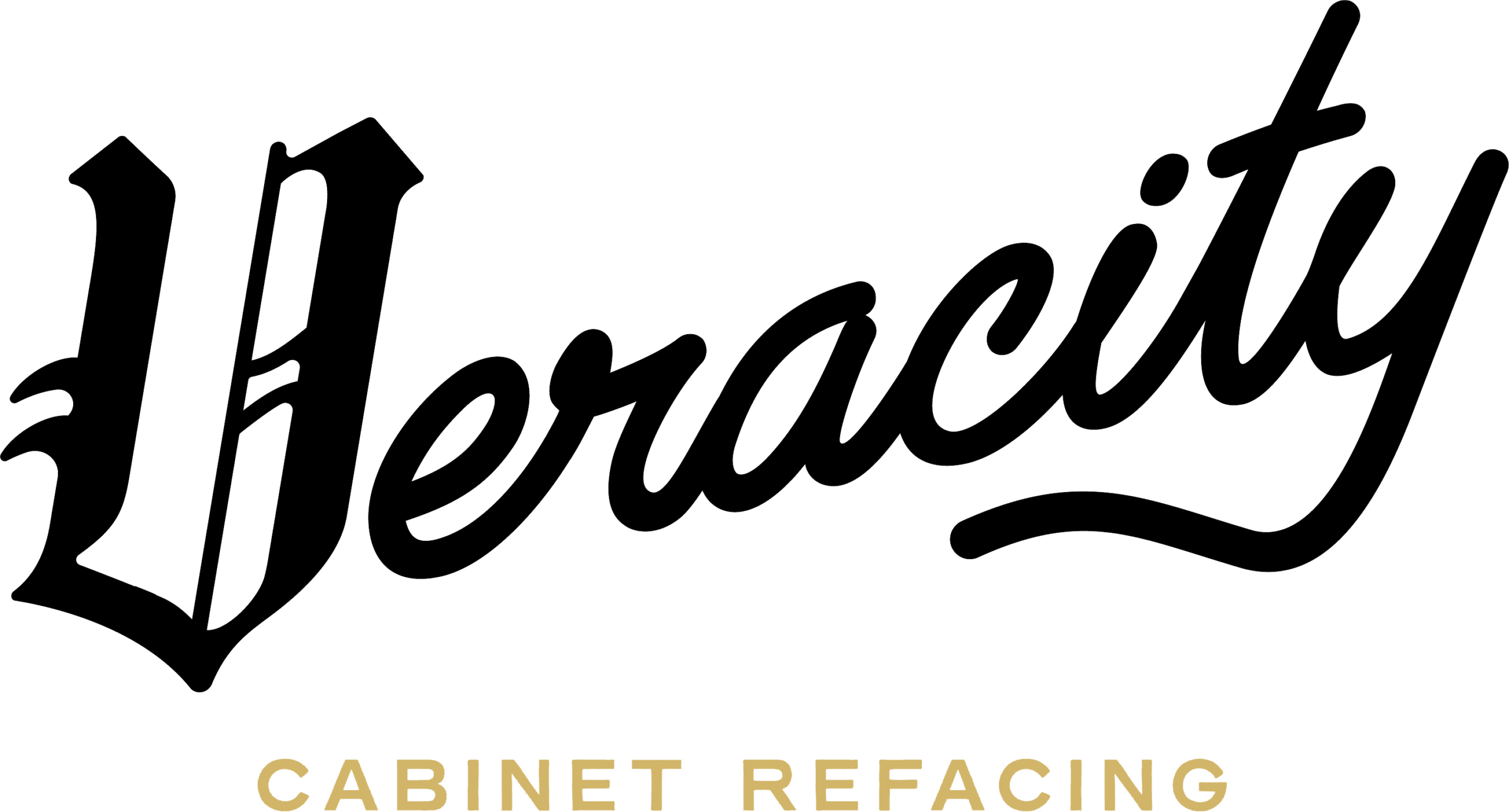Frequently Asked Questions
Do I need to dispose of my old doors?
How long does cabinet refacing take?
Can I use my kitchen during the process?
Because cabinet refacing doesn’t involve any demolition or major disruption in the kitchen (as is often the case with new cabinets) or in-home painting, it’s much less invasive than other processes. You’ll be able to use your kitchen appliances before and after work hours each day. We do ask that you refrain from using the kitchen during work hours.
Is cabinet refacing messy?
Can I change the layout of my cabinets?
Can I change the wood species?
Absolutely! New doors and wood veneer applied to your existing boxes give you the opportunity to change to any wood species you like. You may also choose a painted finish if you prefer.
When we come to make your quote, we’ll bring physical samples to show you the options.
How do you make the cabinet boxes match the new doors?
A wood or painted veneer is applied to the outside of your cabinet boxes, so the face frames and end panels match your new doors.
How do I care for my newly refaced cabinets?
The major concern to be mindful of with refaced cabinets, however, is the veneer applied to the face frames of your cabinets. The veneer used comes with a pressure-sensitive adhesive backing that is applied to your cabinets after a thorough cleaning process to ensure a good adhesion. Even with this strong adhesion, it’s still important to make sure not to consistently drag items out of your cabinet across the face frame.
Also, things underneath your cabinet that might create a good deal of steam like a coffee pot should be pulled out past the front of the upper cabinets to make sure there isn’t any humidity directly impacting the expansion/contraction of the cabinets or veneer.
Keeping a consistent climate controlled environment will ensure long life for your refaced cabinets – which is why refacing isn’t recommended for damp or inclement environments like wet basements or garages.
What does cabinet refacing cost?
Some of the main drivers of the price of cabinet refacing include the number of doors and drawers in your kitchen, the type of doors you choose, hardware, molding, and updates (such as new drawers, soft-close hinges, pull-out shelves, and new cabinet units).
Before creating a quote, we’ll come to your home to show you the available options and take measurements of your kitchen. Any “extras” we discuss together will be itemized separately in your quote, so you can adjust your choices in order to best fit your budget.
How do I clean my new cabinet doors?
The main products to avoid are cleaning products or polishes that contain wax. These products (like Old English or Pledge) will add a certain amount of luster to your surface temporarily but will create a wax build up that requires constant attention and will contaminate the surface, making it harder to clean and maintain in the future
Is my kitchen a good candidate for refacing?
When considering whether your kitchen cabinets can be refaced, the main things to ask are:
- Are you content with the current layout of your kitchen?
- Are your cabinets in reasonably good shape? (No major water damage, not falling apart, finish isn’t flaking off, etc)
- Are your cabinets reasonably clean (not covered in cooking grease)? Or have you used any cleaners or polishes that have contaminated your cabinet boxes and face frames? (Products like Old English and Pledge contain contaminants like wax that can build up on the surface and into the grain structure of the wood, creating adhesion issues with the adhesive-backed veneer.)
If you’re still not sure whether your kitchen is a good candidate, just contact us and we can help!
Will cabinet refacing increase the value of my home?
Every home is unique in different locales and neighborhoods. Generally speaking, though, updating the kitchen or bathroom with cabinet refacing can be the best bang for your buck when considering resale value.
Consult your local real estate professional and see what updating your cabinets in your kitchen can do to help improve your home’s value.
